Feet pounding the stage, guitars quivering with emotion, and dancers whirling in a passionate frenzy. That's flamenco, Spain's soul-stirring art form that plumbs the depths of human feeling. When those crimson-clad performers take the stage, it's as if raw emotion itself has caught fire. A flamenco show is a rollercoaster of sound and silence, its unpredictable rhythms mirroring life's own ups and downs.
Want to truly experience Spain? Forget the tourist traps and dive into a flamenco show. It's the country's heartbeat, pulsing through intimate tablaos and grand theaters alike. If you’re ready to feel the heat, here’s our curated list of Spain's best flamenco experiences.
Kinds of venue for a Flamenco Show in Spain
Tablaos
Tablaos emerged in the 1960s as a more tourist-friendly version of traditional flamenco cafés. With performers just a few feet away from the audience, it’s a more intimate setting. Popular tablaos include Tablao El Arenal in Seville, Corral de la Morería in Madrid, and Tablao Flamenco Cordobés in Barcelona. These venues serve as cultural ambassadors, preserving and showcasing the art of flamenco while providing a platform for both established and emerging artists.
Theatrical Performances
These performances offer a grand spectacle, often featuring large ensembles of dancers, musicians, and singers. These shows blend traditional flamenco with modern elements, creating a visually stunning experience. From intimate theater settings to large auditoriums, they cater to diverse audiences. These productions often incorporate other art forms, such as contemporary dance or multimedia elements, pushing the boundaries of traditional flamenco while still honoring its roots.
Peñas
Peñas are cozy flamenco clubs with deep roots in local communities. Originating as gathering places for aficionados, these venues offer authentic, spontaneous performances. What makes peñas special is their raw, unpolished atmosphere and the opportunity to witness flamenco in its purest form. Often hidden away in narrow streets, peñas attract passionate locals and provide a platform for up-and-coming artists to hone their craft.
Street Performances
Street performances of flamenco often occur spontaneously in popular squares and pedestrian areas. Famous locations for street flamenco include Seville's Plaza de España, Granada's Sacromonte neighborhood, and Madrid's Plaza Mayor. These performances provide an accessible way for tourists and locals alike to experience the raw emotion of flamenco, free from the constraints of formal venues.
Local Bars
You’ll often find impromptu flamenco performances at local bars here. These spontaneous shows arise from the cultural significance of flamenco in everyday Spanish life. This tradition stems from flamenco's roots as a form of expression for marginalized communities, where bars served as gathering places for artists to share their craft and connect with their audience.
Types of Flamenco Shows in Spain
Types | Description | Characteristics | Duration | ||
|---|---|---|---|---|---|
Sevillanas | Born in Seville, this is a whirlwind of colorful skirts and graceful movements. Dancers move in perfect synchronization, their steps echoing the pulsing beats of guitars and castanets. Unlike other flamenco styles, in Sevillanas, you’ll often see couples dancing together, their chemistry as electric as the music itself. | Lively and upbeat tempo. Often performed at fairs and festivals. It has a fixed metrical pattern (3 beats). | Each set 4–6 minutes | ||
Bulerías |
| 12-beat cycle with accentuated offbeats. Dancers form a semicircle and take turns to showcase their skills in a spirited, competitive display. | A set lasts for 1 minute and 45 seconds, usually performed towards the end. | ||
Soleás |
| Slow tempo, introspective mood. It’s based on a 12-count rhythm that combines elements of 6/8 and 3/4 time signatures. | 10 to 20 minutes, depending on the context | ||
Alegrías |
|
| Between 10 to 15 minutes | ||
Seguiriyas |
|
| Around 10 to 15 minutes | ||
Fandangos |
| It uses a 3/4 time signature and consists of six-line verses. The lyrics revolve around themes of love, nature, and social commentary. | Usually 5-10 minutes per set | ||
Tangos |
| Performed in 4/4 time with a strong emphasis on the second and fourth beats. The rhythm is often described as "bouncy" or "swinging." | 5-10 minutes per set |
Where to watch the best Flamenco Shows in Spain
1Best Flamenco Shows in Barcelona
Barcelona, beyond its architectural allure, is also a flamenco hotspot. Tablao Flamenco Cordobés hosts great performances with a side of mouth-watering tapas. It's intimate, it's intense, it's been wowing crowds since 1970.
For a dash of grandeur, you can go attend a show at Palau de la Música Catalana. This UNESCO gem combines modernist splendor with raw flamenco passion. Here, you can watch some of the most popular shows like the Gran Gala Flamenco.
Want something more laid-back? Head to El Tablao de Carmen in Poble Espanyol. Named after flamenco legend Carmen Amaya, it's where authenticity meets artistry. They host nightly shows featuring both established stars and rising talents.

2Best Flamenco Shows in Madrid
Madrid is flamenco's beating heart, offering a variety of top-notch venues. Casa Patas hosts nightly shows featuring raw talent. For a gourmet twist, Corral de la Morería pairs world-class performances with Michelin-starred cuisine. Legends like Paco de Lucía have graced its stage.
Teatro Flamenco Madrid blends tradition with a modern twist and you’ll see it in their famous ‘Emotions Show’. Las Carboneras keeps things cozy and authentic. Fancy something different? Cardamomo Tablao Flamenco, a New York Times-recommended venue is known for its innovative fusion alongside classic acts.
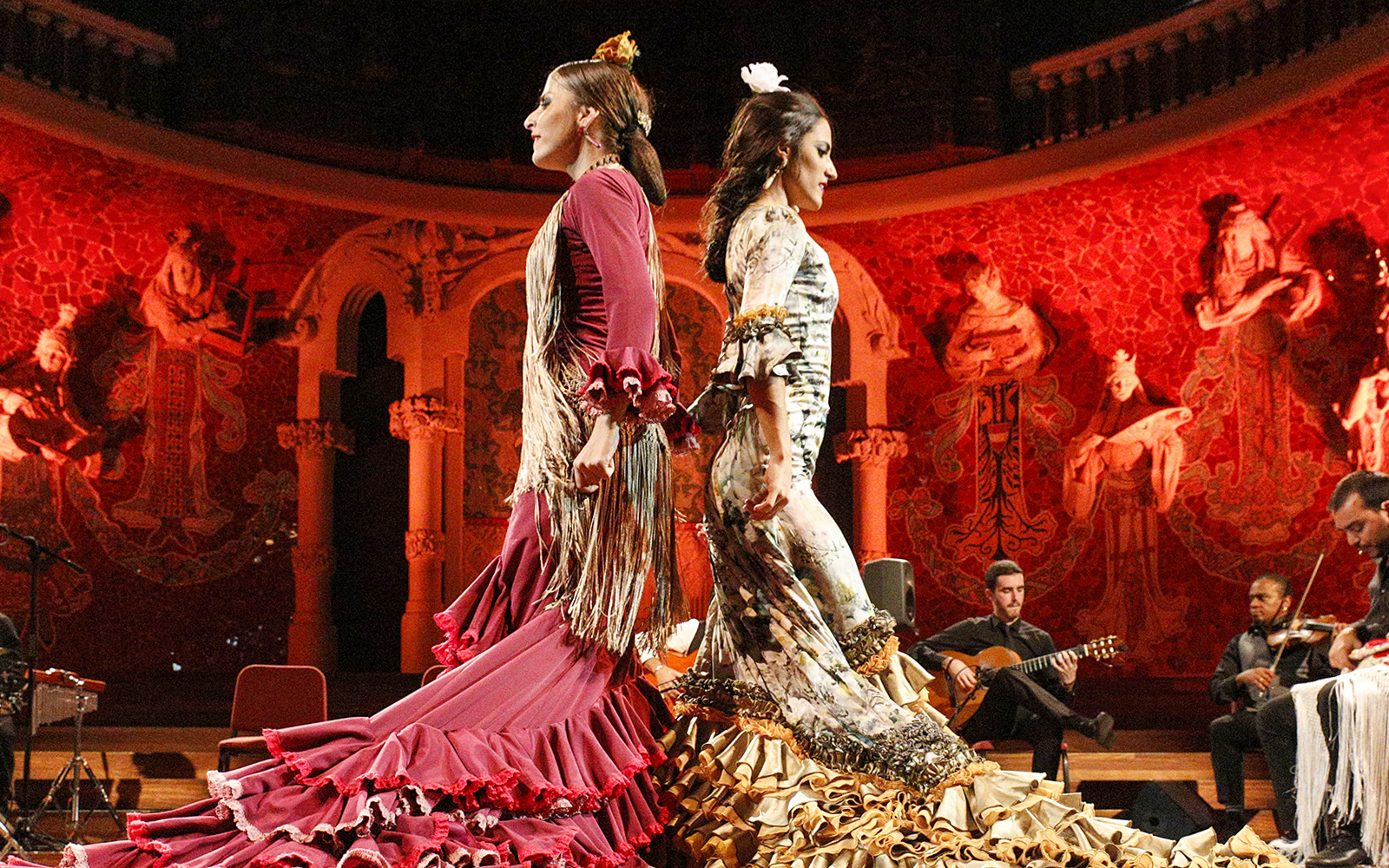
3Best Flamenco Shows in Seville
In Seville, you're not just watching flamenco — you're experiencing its very soul, as it is considered to be the birthplace of flamenco. La Casa del Flamenco, set in a restored 15th-century palace, hosts authentic performances in a stunning courtyard.
Tablao El Arenal, with its 40-year legacy, turns every show into a celebration. For a cozy experience, El Palacio Andaluz captures Andalusian essence in nightly performances.
Teatro Flamenco Triana, in the historic Triana neighborhood, showcases both seasoned pros and rising stars. It partners with the Cristina Heeren Foundation of Flamenco Art, ensuring a steady stream of fresh talent.
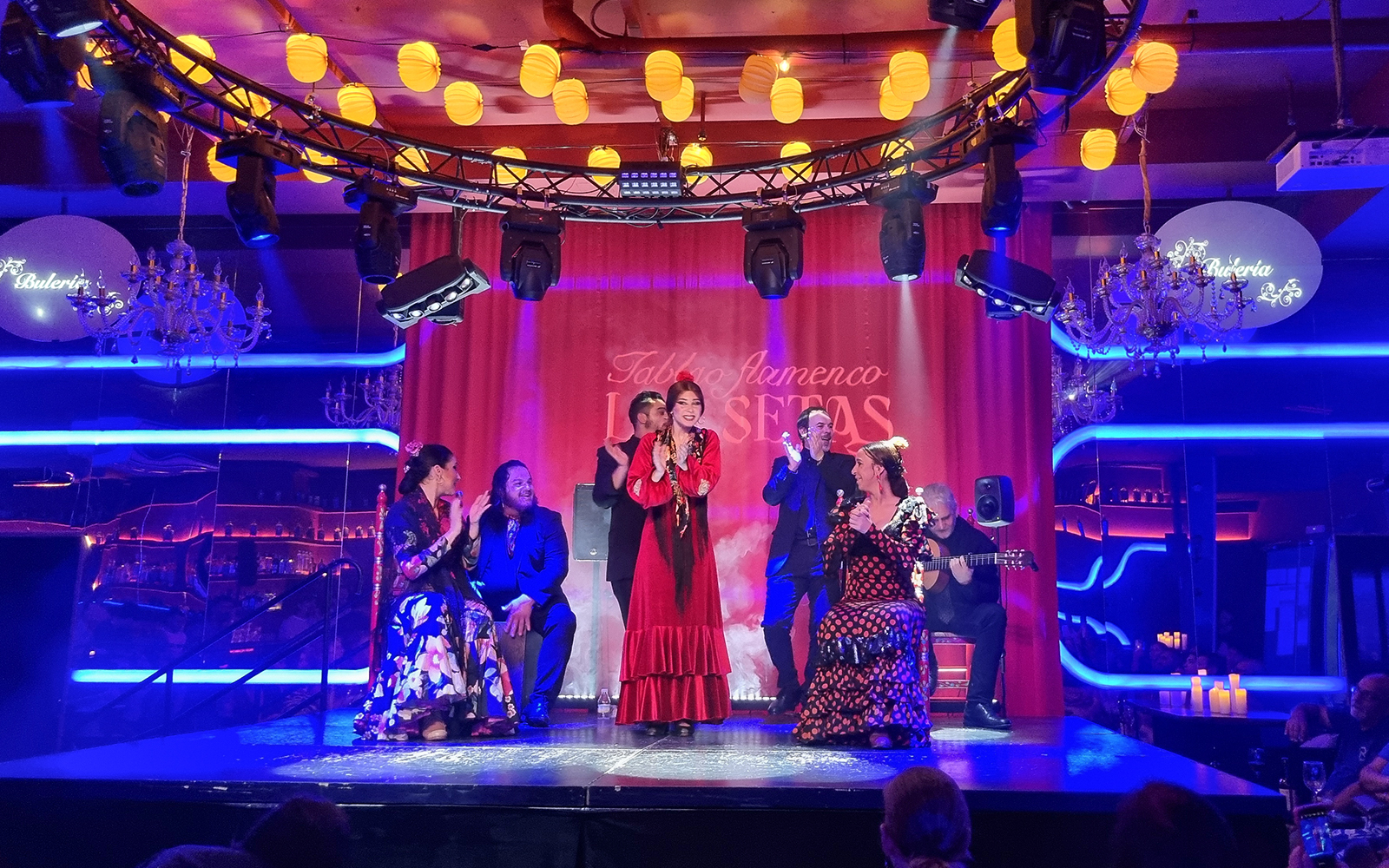
4Best Flamenco Shows in Malaga
Malaga, the birthplace of Pablo Picasso, is also a flamenco gem. Kelipé Centro de Arte Flamenco is the city's most popular venue hosting shows from Thursday to Sunday at 8pm. In addition to performances, Kelipé offers workshops for those interested in learning flamenco dance and music.
The flamenco culture in Malaga has evolved from its gypsy roots to embrace modern influences. Two other must-visit venues are Tablao Flamenco Alegría and Tablao Los Amayas. For a truly unforgettable experience, catch a performance by local legend Rocío Molina, known for her innovative and avant-garde approach to flamenco.
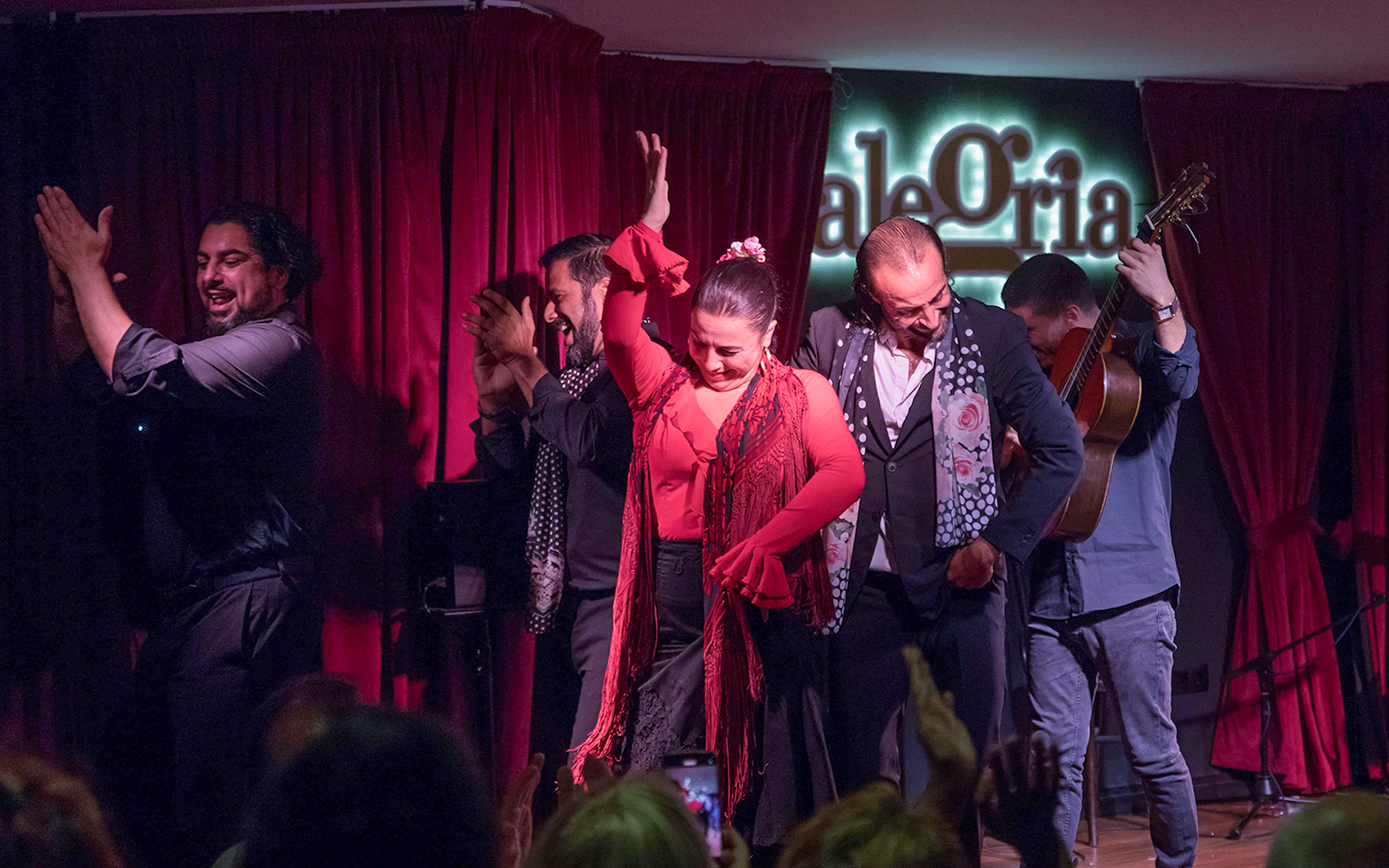
5Best Flamenco Shows in Cordoba
Cordoba's flamenco scene is as rich as its Andalusian heritage. Tablao El Cardenal, tucked away in the Jewish Quarter, offers intimate shows with up to nine performers showcasing various flamenco styles.
For something different, check out Tablao Arab Baths of Santa María. Here, you can watch flamenco in a unique setting with horseshoe arches and colorful stucco. Arte y Sabores de Córdoba serves up a tasty combo of traditional Andalusian food and captivating flamenco.
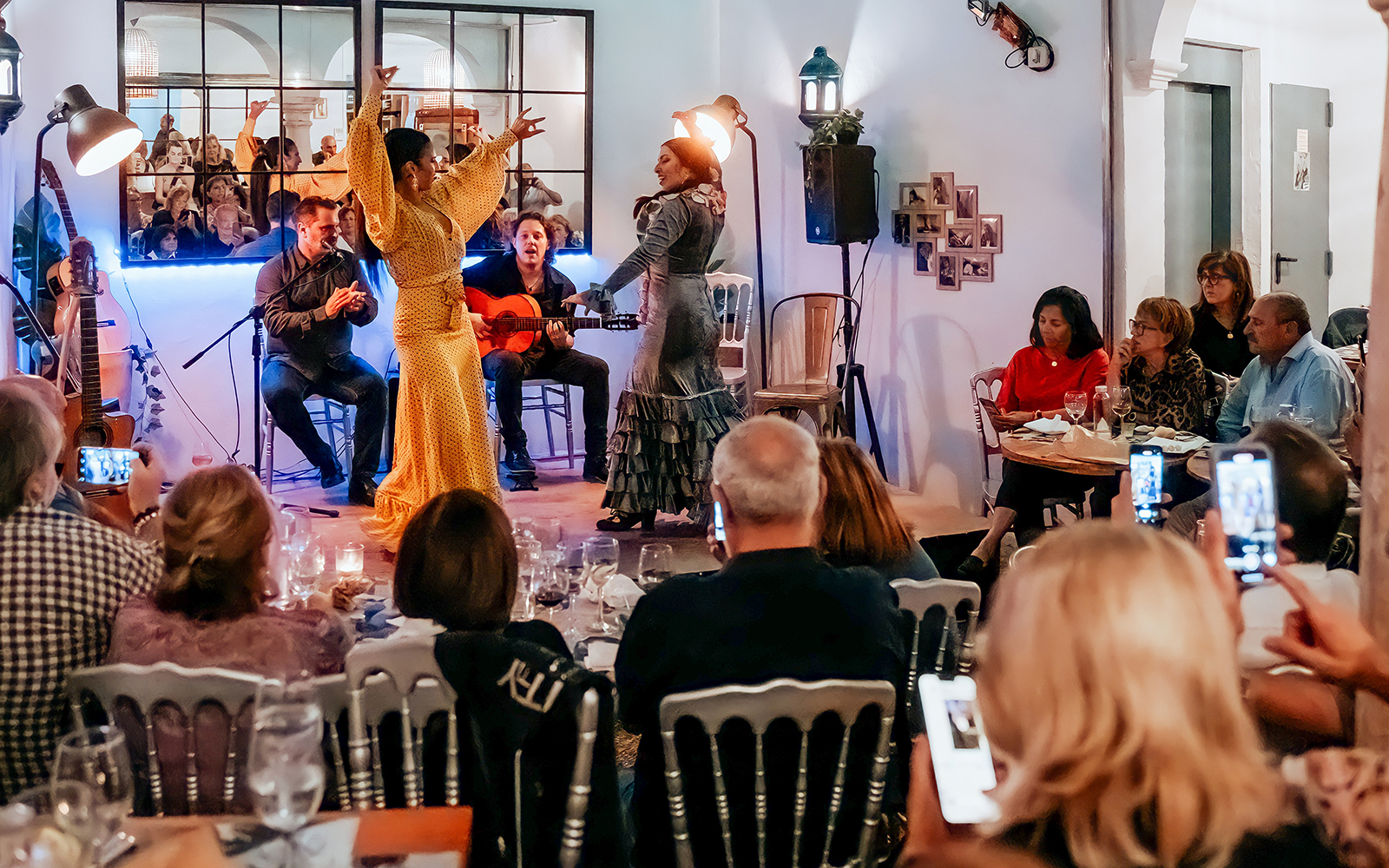
6Best Flamenco Shows in Granada
Granada's flamenco scene is a spicy blend of Moorish influences and Andalusian passion. The Sacromonte caves neighborhood, where gitanos (gypsies) have performed for centuries, is the Flamenco hub of the city.
For a more local experience, Le Chien Andalou in the Albaicín neighborhood is your go-to. It's like watching flamenco in a cozy cave -— perfect acoustics included.
Venta El Gallo is perfect for dinner and a show, offering flamenco performances with stunning views of the Alhambra at night. Jardines de Zoraya has a more garden party vibe, and you’ll find high-quality performances here. It’s worth attending a "Zambra Gitana" show, a unique Granada flamenco style that originated in gypsy wedding celebrations.
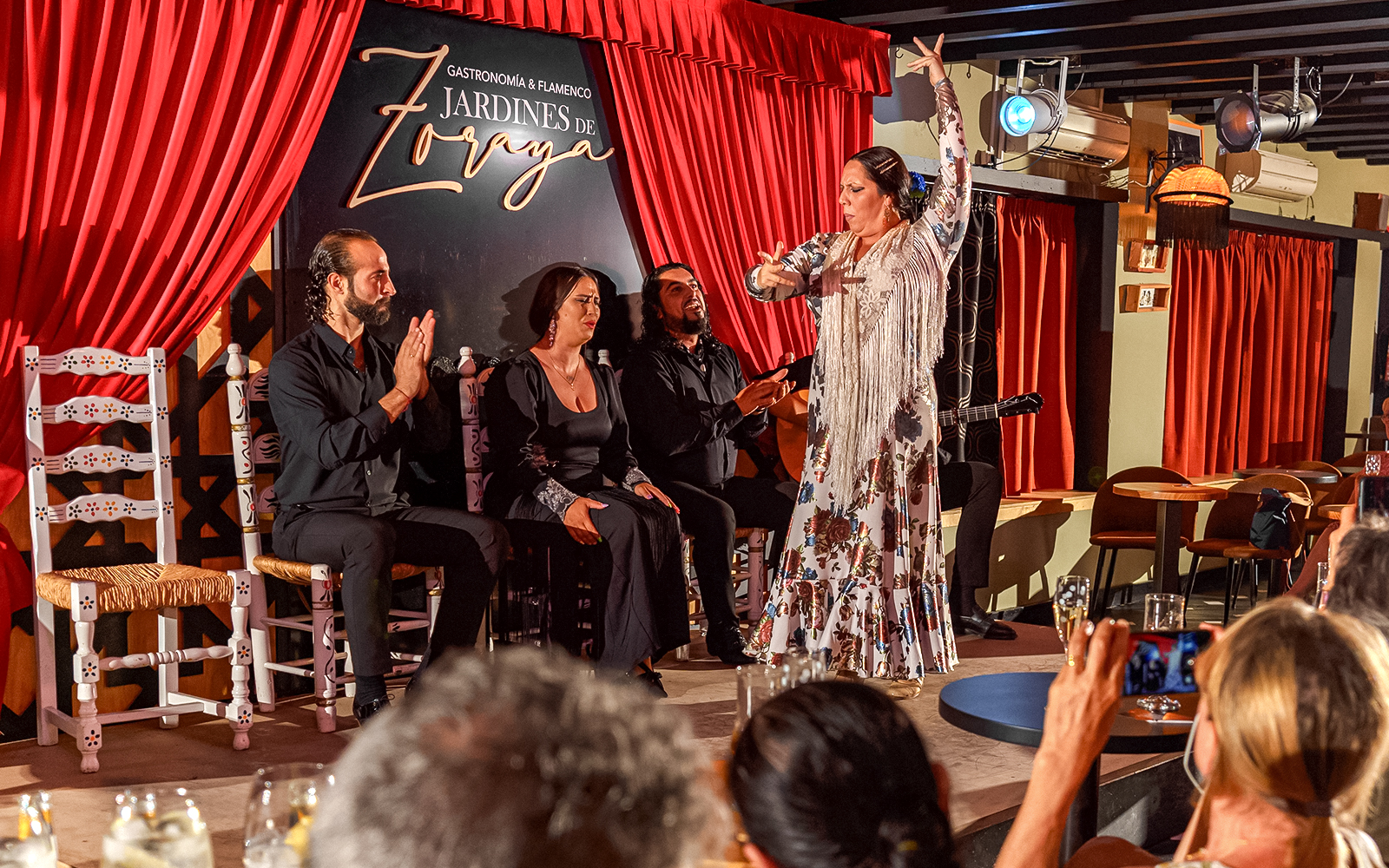
Tips for having the best experience
- Popular shows often get booked soon, particularly in busy tourist months from June to August. Secure your tickets early — at intimate venues, back-row seats are not quite fun. You'll want to be close enough to feel the dancers' energy and hear every guitar strum.
- Arrive 15-20 minutes early to snag prime seats and avoid disrupting the show. Many venues offer first-come, first-served seating, so punctuality pays off. You might also get to enjoy pre-show drinks and tapas, setting the mood for an amazing show!
- Flamenco thrives on passion and storytelling. Let yourself be swept away by the music and dance — it's bound to move you. Some flamenco styles encourage audience participation, so don't be shy about clapping along or showing appreciation.
- Dress smart casual, but check venue expectations. Some upscale spots may require more formal attire. Many opt for bold, vibrant colors like reds, deep blues, and bright yellows to match flamenco's passion.

